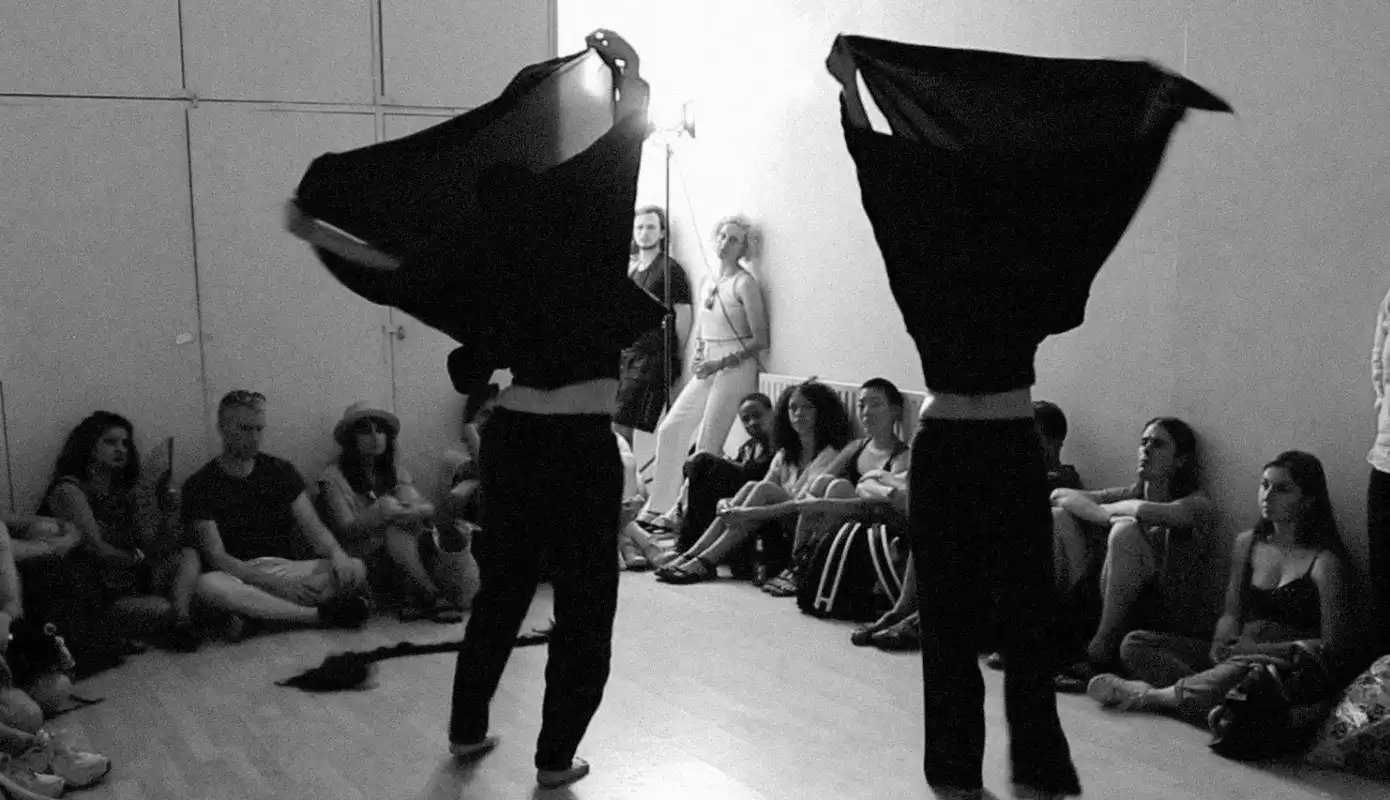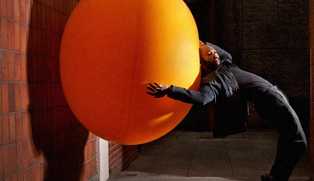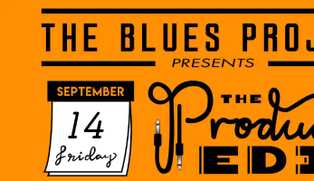Skin Deep’s Courtney Yusuf caught up with British-Iranian multi-disciplinary artist Lilian Nejatpour ahead of her performance at Somerset House on the 25th September. Her latest piece, ‘Choreophobia,’ explores the pressures of the western gaze in defining dance and gender in the Middle East and the highly politicised sensuality of the male body. Enjoying the last of the summer sun outside a pub in Central London, they talked about everything from the interplay of Northern bassline club culture and the trance rituals of southern Iran to the importance of doing the dishes for clearing a cluttered headspace.
*
Courtney Yusuf: Where is home for you? Lilian Nejatpour: I live in Morden with my parents at the moment. End of the Northern Line. I’m sort of travelling between there and Deptford because that’s where I’m rehearsing with my two dancers. Morden’s somewhere I can just bury my head under a rock, where I don’t have to be in the hustle and bustle. It’s not very gentrified and it still has local markets and cafes. London is really fast paced and it’s just nice to be in a place where you can completely unwind and do really boring tasks. I think it’s really good for your mental headspace. Like washing up… You just look through the window and you’re like, right, yeah, I know what I need to do. It’s so good! CY: Do you think London is a good place to be a young artist? LN: I think in terms of networking, obviously, and how we have access to a lot of galleries and institutions that are free. There’s also a sense of community here and a lot of collaboration, which is exciting. For me, working with dancers has been an incredible experience and working with creatives from completely different disciplines has meant there’s been such a change in my thought process. It’s becoming a lot more inclusive and collective and I think that’s pushing more boundaries. The problem is the general cost of actually doing anything. Even just getting around. You end up juggling working a day job, trying to have a social life, and putting your money into a piece of work that you don’t know will lead to anything. There’s also the struggle of profiting from what you do. We’re all so unsure about what our day rate should be and we end up charging less than we should. There needs to be more emphasis on how your labour is worth money – even doing a little mix for someone should be recognised as a job. CY: What have you learned from working with dancers? LN: That it’s actually quite a lot of work analysing movement and generating movement from scratch. I’ve had to watch footage and deconstruct each phase, thinking about the mood and intention of each movement. It’s such a different way of working for me. Visually you can be so encapsulated with something but then how does it link to the question? It’s almost as if you’re writing an essay: ‘Why have you moved from one move to another and what’s the intention there?’ I just don’t know how the dancers manage to count, keep in time, and plot in markers of the sounds and movements – it’s mad!
CY: What is Choreophobia? LN: Choreophobia is a term that looks at how dance can become transgressive and moves out of social norms. It was coined by Anthony Shay, a choreographer based in the US. He’s worked in Iran and done a lot of research on how dance is portrayed both there and in the Western gaze, particularly following WWII when there was a lot of pressure to define dance and gender it in a specific way. He made the point that male dance in the Middle East was viewed as effeminate because a lot of men twirl their wrists, use their hips, and move in a very fluid way, and how there’s a phobia that surrounds that. He also looked at how dancing was criminalised after the revolution and how the phobia of dance extended to both improvisation, and when people dance in private settings. CY: As an artist you’ve moved between lots of different mediums. What is it about dance that caught your attention? LN: I think with this particular work it came from seeing my dad and family members dance at gatherings in this really free and liberating way. I was thinking how would these dance moves operate if there was an audience and what would they think of it? From there I found Anthony Shay’s work and Choreophobia and that opened up a whole world about how you can express yourself through dance but also be very governed by the state. CY: What role does music play in the piece? LN: The music is a mix of traditional Iranian pop songs with a type of really heavy bassline music that I grew up listening to – very specific to the North. It’s called Niche and it has these really weird bass tones and shaky female vibrations in the vocals. I was interested in how bass makes you feel and move, how it makes your chest tighten. You have very visceral reactions to sound, and it can become almost transcendental. I’ve been thinking about trance dance music and the rituals that happen in the south of Iran that don’t have bass but have heavy drumming. I’m trying to capture the cultural displacement of how I feel being a British Iranian who grew up in the North with no stable references, creating memories that kind of blur into one another. The piece is very intense for the audience and even the dancers feel it’s quite emotionally demanding.
CY: As a self-identifying British-Iranian, is there ever pressure to produce work that expresses that explicitly? LN: I’m always aware of how the Orient is exoticised – I’m still Western and British at the end of the day. I haven’t grown up in Iran or gone through the political uproar of the revolution. I’m trying to navigate these two cultures and worlds that have a history. I’m always trying to think about an Iranian audience looking at the work and how they would perceive it. It’s not just about the western audience. CY: When you go to Iran is there a particular place there that you feel happy? LN: I feel really happy at my gran’s house. It’s so relaxing. I think there’s something about everybody sitting on the floor that I really love and miss. Having endless cups of tea and chatting, you completely forget about time. It’s so hard to get around because you’re constantly stuck in traffic so being in that home space is really nice. You feel like you don’t wanna move. Lilian Nejatpour’s latest work, dance-piece ‘Choreophobia’, will be performed at Somerset House on September 25th and is curated by Lorén Elhili and Nora Almes of TWTMC. Register for free tickets here.




